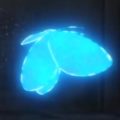A Blue Exorcist, Take Two

The old “Ao no Exorcist” series started off with quite a bit of potential, but then caught up to its manga counterpart and deviated from the plotline, losing its way in the process. It started too soon, and 26 episodes later, it ended on an unfulfilled, middling note, leaving many plotlines hanging and a door open for a sequel. Overall, the series was average, as it didn’t bring anything new to the table but was still well-made enough to earn consideration as a show to watch. I did not watch the movie, as I was told it utilized a completely different timeline and have only the characters stay true to the story. However, this new series, known as “Ao no Exorcist: Kyoto Fujouou-hen,” would be different, as it continued on the main plotline and despite being a mere 12 episodes, had much more potential compared to a movie that would be at most 120 minutes. Does this series put the luster back into the franchise?
“Ao no Exorcist: Kyoto Fujouou-hen” starts off right where the former series had ended, after Rin has been put basically on probationary demon-watch. He and his group have been called into action to assist the Kyoto branch of True Cross Academy after attempts were made to steal one of their guarded relics, the “Right Eye of the Impure King.” However, the lingering effects of Rin’s trial make themselves known immediately. Rin is shunned by nearly every one of his classmates and fellow exorcists, blamed for injuries, damages, and death due to his demon heritage. His younger brother Yukio is only faring slightly better, having to deal with his own half-demon heritage and motivations behind why he works so hard for so little return. Yukio’s frustrations are stroked by the quite generic main villain, Saburota Todo, whose sadistic smile permeates through every scene as his plan goes into action. The series tries to use the slow rate at which Todo executes his plan and his enigmatic, taunting dialogue as a way to worm its way into the viewers’ minds, but he is too generic and shallow a character to evoke too much fear. Todo also comes off as too apathetic to be considered vengeful against the exorcists, and the sluggish increase in his level of evilness exacerbates his character’s low development, already stunted due to the series’ 12-episode length.

Instead, the main plus points with this series is the development of its main character, Rin, along with Yukio and Ryuji. With Rin, the series captures his development and struggle of his two sides in a fantastic manner, combining his lack of control over his demonic powers along with his lack of self-confidence into something that is at times amusing and at other times touching. It’s a wonderful evolution of how he was from the first series, using his headstrong and silly personality to mask his burning desire to defeat Satan. As for Yukio, one begins to see cracks form in this formerly stoic overachiever. We see a more vulnerable side to Yukio, a side jealous of his older brother’s determination and one where his overachieving tendencies are portrayed as a crutch to his more introverted, submissive personality. We also see him (temporarily) portrayed as a demon, a quite amusing scene where the series shows that the issues one faces may be more internal, and that one can be overwhelmed by issues not entirely apparent at the surface level. As for Ryuji, bits of his personality mirror that of Yukio’s, but the cause of this is entirely different. The series portrays Ryuji coming to terms with being the head of the family, in contrast with that of his friends. We see the background of his father’s religious sect and why it became a laughingstock, leading to Ryuji’s emotional distance with the rest of his family and his motivation for wanting to become an exorcist. The tie-in with Shiro Fujimoto is quite excellent, and perhaps even better than the main plotline. With these three characters, there are overarching themes of trust, facing your true tasks and addressing issues at hand. However, it is unfortunate that many of the other side characters stagnated and don’t bring anything new to the table. At least Shura is a bit less apathetic in this sequel.
A little more can be said about the series’ animation and scenery, which are still quite vibrant as always, with slightly more detail in the backgrounds. However, for a shounen series, fighting and one-on-one combat is quite lacking, and comes at a rate less than half that of its predecessor. There’s no sense of suspense, of drama, and no climactic points in a battle between two individuals, and whatever is animated looks dull and cheaply done. It’s as if the production team decided that the quickest, cheapest, and most effective way to address a shoestring budget is to destroy what makes a shounen anime its personality and compelling reason to watch. Not even Amaimon shows up in this series, and scenes with the formerly flamboyant and silly Mephisto are now boring and dull. At 12 episodes, there is not enough time and the plot doesn’t move quickly enough to move the story along, as a full length series if not longer is needed to fully develop both storyline and characters. Instead, this series is just one of “villain of the arc” with a short burst of story movement, and just a stepping stone which opens up doors to more questions as the series is left unfinished.

However, that does not mean it’s not worth watching. As a standalone series, “Ao no Exorcist: Kyoto Fujouou” just doesn’t work. Much like the successor “Durarara X2” series, it comes so late past its predecessor series that there is a huge disconnect, and feels dull and forgettable. “Ao no Exorcist: Kyoto Fujouou-hen” instead works best when viewed in conjunction with the predecessor “Ao no Exorcist” series. The main draws here are how much the characters develop from the main series and that it canonically follows the main manga series as well rather than deviate due to lack of material. However, since this is marketed as a standalone series rather than part of its predecessor, the effect of the villain in regards to the storyline is muted, the animation is rubbish, and the series can’t ride on the tailwinds of the main series as much so the plotline never fully rises to its full potential. This successor series also suffers from a negative aspect of the original “Ao no Exorcist.” It, like its predecessor, comes off as average at best, and maybe even worse than average, as it doesn’t bring anything new to the table. Again, it’s not to be avoided, at least not for fans of the original series, but neither will it succeed by bringing new fans to the table.





